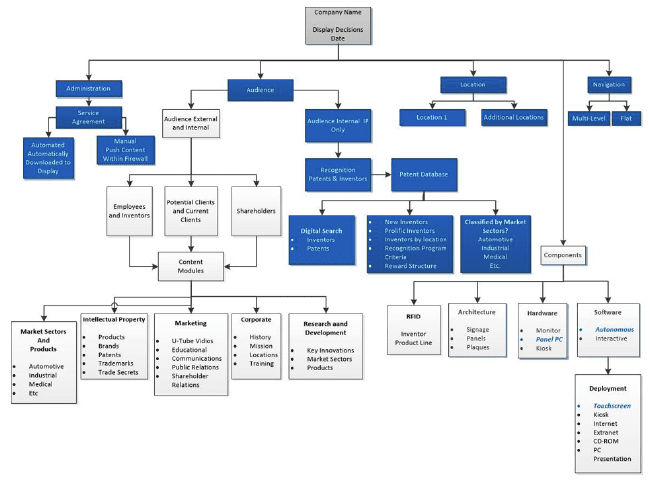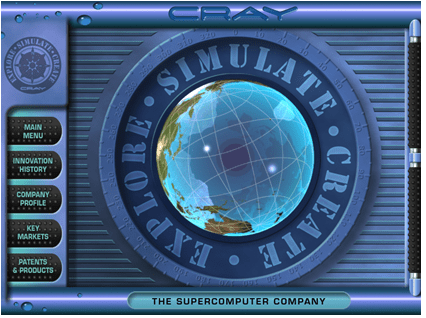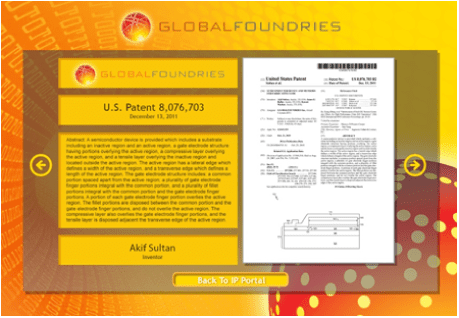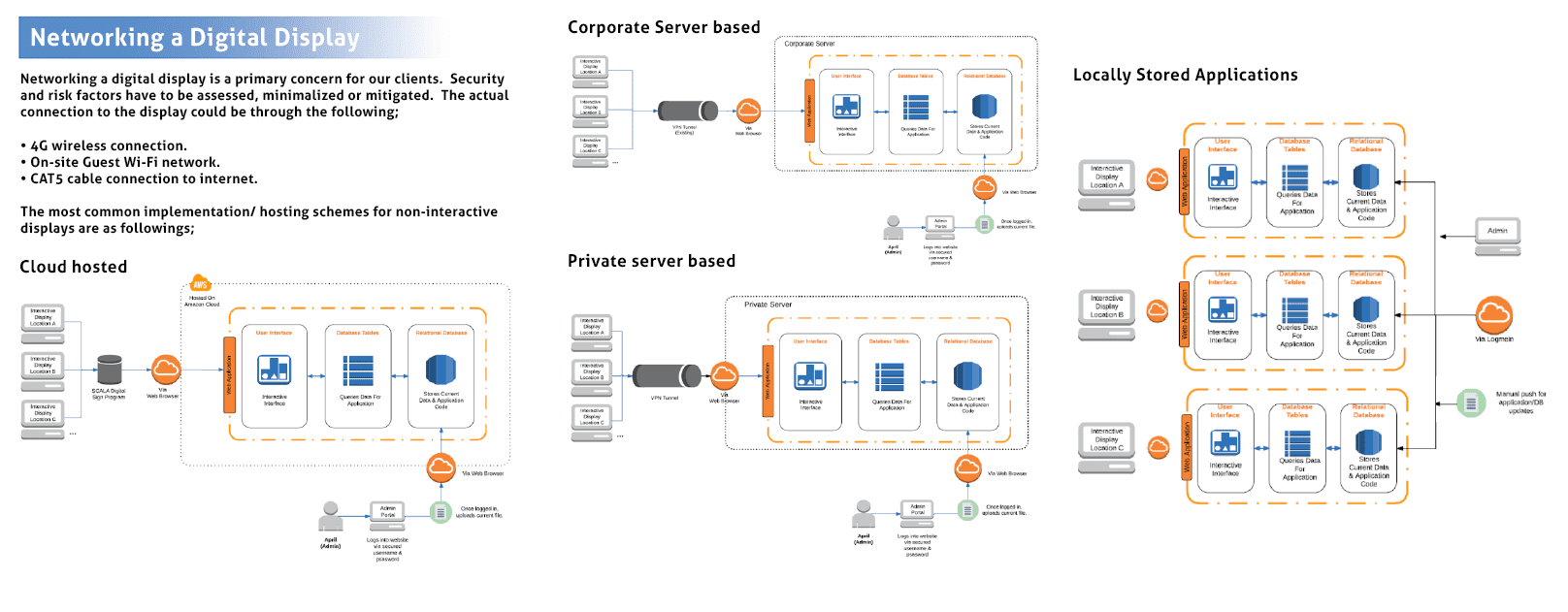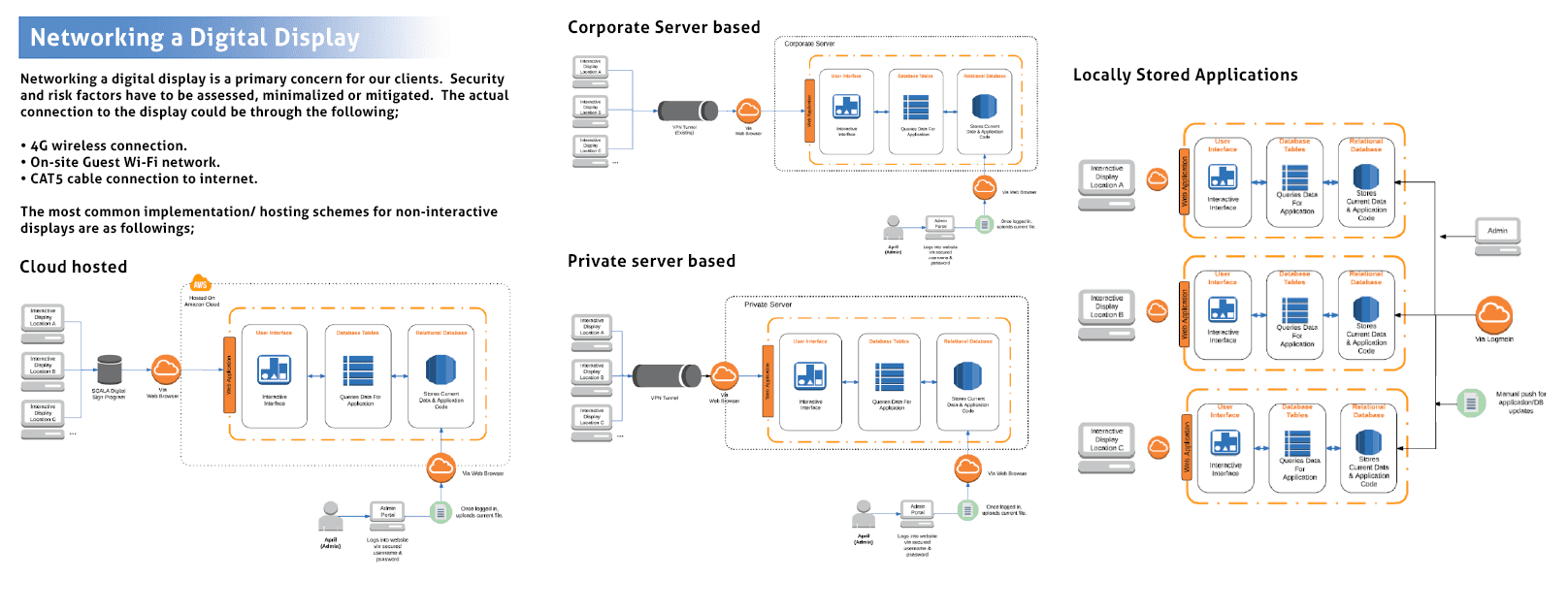What if you could "visually" express to your important constituents, the strategic value of innovation and intellectual property? What if you could link patents to real world products and processes so that anyone could understand the connection between innovation and market leadership? What if you could recognize the inventors and people behind invention and innovation in a digital and engaging manner? Interactivity opens up a whole world of communication possibilities to capture, distill and celebrate innovations, patents, brands and virtually any form of intellectual capital or property.

Whether on a kiosk or touch screen, internet or intranet, once the data and content has been gathered and organized, it can be disseminated to an entire corporate enterprises.
All projects have basic development phases that we thoughtfully guide our clients through:
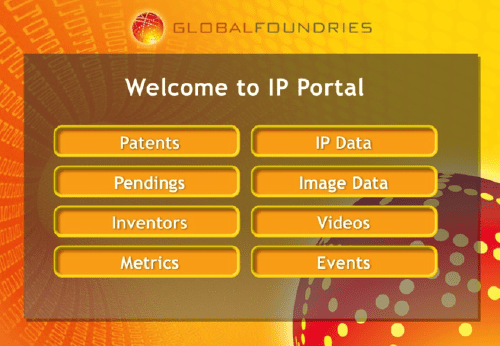
Engage viewers around patents and innovations with interactivity
It is truly astounding how we are all influenced and accustomed to digital displays and interactive functionality. It is even more astounding that very few organizations have appropriated digital displays as an IP communications tool and with an opportunity to focus a viewer's attention on Intellectual property, innovations and dynamic inventor recognition.
Interactivity offers the highest level of viewer engagement and content retention because viewers can explore the subject of innovations and intellectual property at will.
Viewers can intuitively explore the mystic behind patents, inventors and patent protected products in our modularly based content system. Imagine a company's historical legacy of innovation distilled down into one of our historical content modules (See Modules) Imagine the ability to communicate the superiority of products under IP protection with a patent viewer module. Learn about the people and inventors that bring ideas into existence.
The ROI goals of any IP innovation display are to (See Benefits):

Key objectives and goals of an interactive display
The key objectives to successfully engage a viewer or constituent:
The diagram shown illustrates the vast amount of interrelated content that can be included into an interactive IP display. The items shown in blue comprise a basic level, interactive Inventor Recognition program containing a complete digital archive of patents that viewers can search, view recent patents, see new inventors and their location, and finally, to see any uploaded IP style videos. The display program executes its own "patent retrieval software" to acquire weekly updated patent information directly from the USPTO - automatically!
IP Content (Levels of Interactivity)
Content can be organized into levels of depth, from basic, to intermediate, to advanced. These levels are starting point in establishing the scope of the project and the organization of its content.
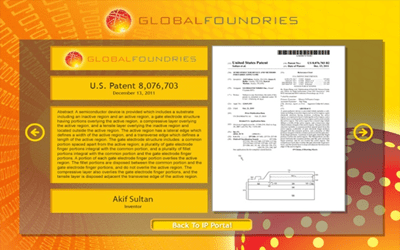
Basic Interactivity
Level 1 Interactivity Includes:

Intermediate Interactivity
Level 2 Interactivity Includes:
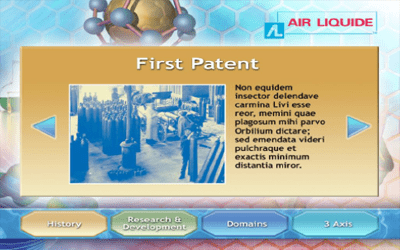
Advanced Interactivity
Advanced level 3 interactivity requires incrementally more participation from the client to administrate the display. The effort translates into a more engagement and positive reinforcement, which are priceless. A compelling reason for level 3 interaction is compelling users to revisit the display so that they can learn more, but be reinforced by the single important message - invention is critical to sustainable growth and inventors are critical to invention.
Some advanced level features could include the following:
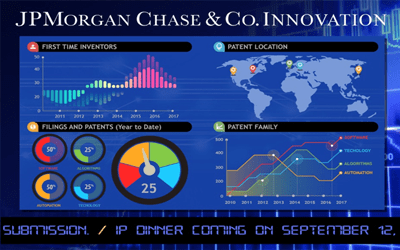
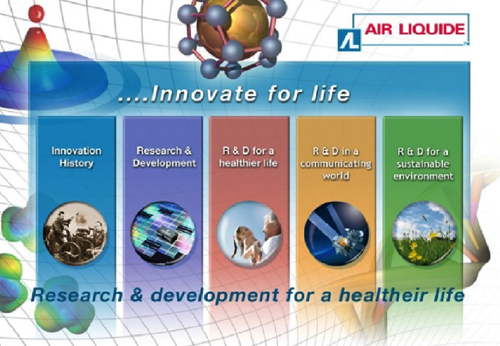
IP Modules
Organizing content into specific modules makes sense from a development, programming and administration point of view. It capitalizes on interactive navigation and content organization so that viewers from different perspectives can find content of interest to them.
Modules can include;
In our experience, the following modules cover most areas of interest from our client's viewers:
Module: Main Menu
This is the launching point for the user experience. Any number of navigation modules can be reached from the main menu.
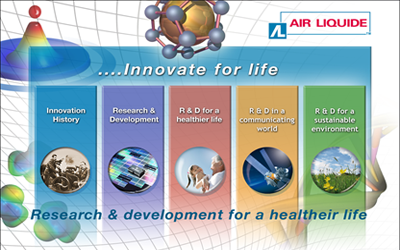
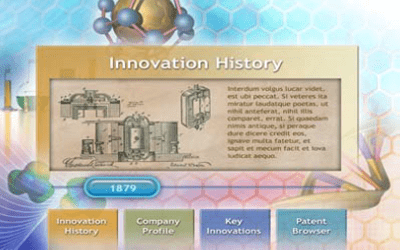
Module: Innovation History
This module can be as extensive as desired and linked to an interactive, digital timeline of corporate innovations, patents, brands and products, thus celebrating a corporate legacy of invention and innovation. A legacy of invention implies a destiny of success.

Module: Company Profile
This module features everything related to the company and its culture. It defines the company's personality, innovative culture, locations etc.
Module: R&D and Key Innovations
This module features tailored information about R&D efforts and the return on investment from innovation. It can include:


Module: Patent Browser and Mapping
This module showcases the real-world results of innovation and patents visually mapping them to innovation products and services. Complete digital patent archives can be made accessible and automatically updated weekly via our automated software programs and administrator support tools. Patents can be organized in significance by:
Module: Patent Metrics
Patent metrics are displayed in a dashboard format to reflect interesting information such as year-by-year comparisons, charts, infographics and more.
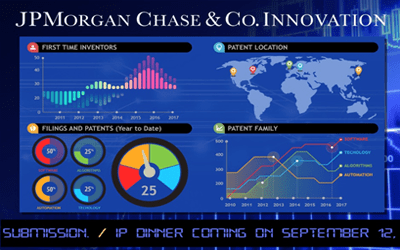
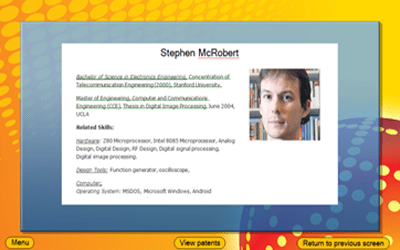
Module: Inventor Recognition
Inventor recognition is a defacto inclusion to all digital and interactive displays. It is the spot light for inventors to be briefly recognized across entire corporate enterprises. It is a means to communicate to co-workers and project contributions. Contents can include;
Interactive IP displays require a menu driven screen for navigation, typically called the graphic user interface (GUI), which forms the foundation of the user experience (UX). The user interface has to be empathic and inclusive across a wide range of viewer interests.
The design of the GUI should also embrace a company's personality and brand. It could incorporate a design emblematic of the company's business line(s) or innovative core competencies. The graphic user interface can either be the "standby" screen for the display or the first engagement point behind a screen attractor mode such as scrolling patents or videos, for example.
We specialize in graphic design and collaborate with our clients to develop, design and program their totally customized graphic user interface for the IP display.
Some key goals of the GUI are to;


The software specifications include the following (if applicable) and depend upon the complexity of the project.
The software specification includes a definition of the project scope which is basically a ledger of all the graphic elements, navigation, number of screens etc. that will to be accounted for during the software design.
Obviously, a good design plan calls for detailed scheduling of all elements, documents and action involved in any sophisticated multimedia project. But carefully guide our clients through all steps.

Managing a IP project with multiple integration, content, hosting, serving, and deployment concerns is an art unto itself. Experience has to combine with intuition to foresee problems, customer needs and project creep. By clearly defining the depth and scope of a project up front, and carefully and collaboratively working with our clients at each step, we take the guesswork out of the result.
Initiation may involve a no-charge on-site visit to discuss expectations. Planning requires careful concept design, prototypes and anything to secure a client's confidence. Execution is the installation and networking requirements and technical support for same. Closeout is making sure requirements are met, any software bugs are addressed, viewer measurement is logged and reviewed, and revisions are implemented.
Integration is getting information and data into the display. Where data comes from various systems and in many file formats. We offer a variety of solutions that covers to entire corporate enterprise, from stand-alone, non-networked solutions to integration with sign management software.
Implementation is about the processor element of the display and how it will be networked. Implementation also includes server or cloud hosting considerations. Networking requires some kind of processing unit at the display location, such as a laptop or tablet PC.
We simplify the administration effort of an interactive display with content management solutions that range from zero administration required (fully automated content retrieval) to more concerted yet minor administration efforts. This depends upon the robustness of the content and the export/input of information from other sources, such as IPFolio. Where there is administrative effort required, we simplify it through any software automation and through an administration portal where content can be uploaded and published through Excel, CSV or XML templates that we will design for your administrators.
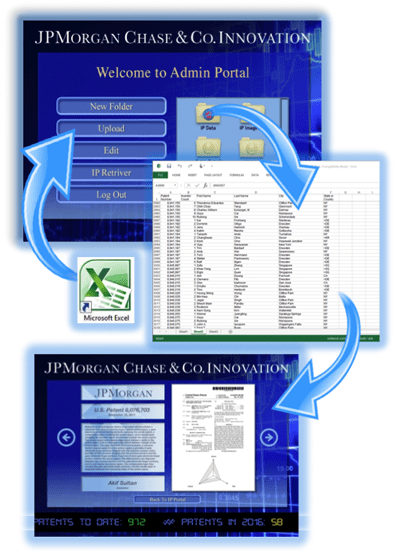
Our automated patent retriever software automatically acquires newly released patent data from the USPTO and formats it perfectly for the display with no administration effort. Any data that appears on a patent's front page can be captured and integrated automatically.
Administrators can seamlessly import data from other sources such patent docket programs (i.e. IPFolio). Admins can Import numerous file formats such as Excel, XML, CSV, and others through publishing templates. Even graphic elements, PowerPoints and MPV videos can be posted.
All types of IP digital displays (interactive and non-interactive) can also be managed from within popular industry standard display signage software applications such as Scala.
We also provide display management as a subscription service where would handle all the efforts for a nominal monthly fee.

